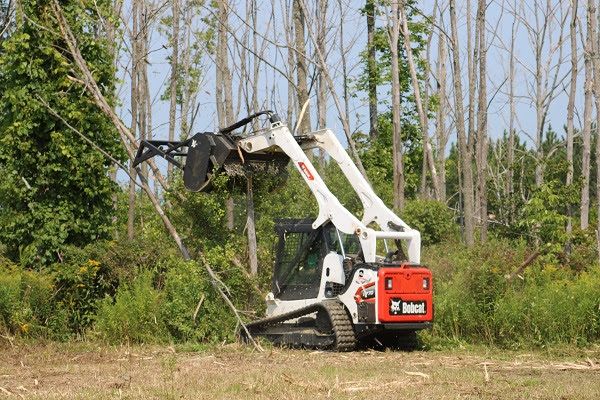EDGEFIELD, S.C. — As a skid steer grinded overly dense shrubs and vegetation to wood chips on the Finger Lakes National Forest, enhancing wildlife habitat, the first acres of habitat enhancement for the NWTF’s new Forests and Flocks Initiative were placed on the scoreboard. As part of its annual August meeting, the NWTF’s National Board of Directors joined NWTF co-CEOs, NWTF conservation leadership and USDA Forest Service staff on the national forest to see the kickoff project that will count toward the Forests and Flocks Initiative’s 100,000-acre habitat enhancement goal, thanks to significant support from the NWTF members of New York.
The new NWTF initiative was announced earlier this week.
“It was great to witness the first acres that will count toward Forests and Flocks’ habitat enhancement goals, and we look forward to all of the future success of the initiative,” said NWTF National Board of Directors President Parks Shackelford. “Forest and Flocks creates needed energy around specific priorities in the Northeast, such as being proactive and preventing a wild turkey population decline and building support for our hunting heritage.”
The NWTF’s National Board of Directors and staff toured project sites across the Finger Lakes National Forests that were in varying states of management, including sites where habitat management was needed, where it has taken place and where it was currently happening.
The active project site the NWTF National Board of Directors saw builds on a partnership more than a decade long between the New York NWTF State Chapter and the Finger Lakes National Forest, conducting similar work. The project consisted of mulching down undesirable woody shrubs and trees while leaving beneficial, mast-producing trees and shrubs like cherry, dogwood and apple. The contractor the NWTF hired, coupled with a forestry mulcher on a skid steer, made light work of the ~15-acre project site, disintegrating undesirable trees and shrubs with ease.
In addition to the mastication work, the contractors established firebreaks along the project site. Forest Service staff will implement prescribed burns on the managed area in the near future, further setting back forest growth and stimulating new native grasses and wildflowers.
“Thanks to consistent and significant funding from the NWTF members in New York, hundreds of acres of habitat enhancement have been conducted on the Finger Lakes National Forest,” said Mitch Blake, NWTF district biologist for New York, Delaware, Maryland, New Jersey and Pennsylvania. “We have conducted projects like what our board of directors witnessed recently, as well as many other projects that benefit wild turkeys and overall ecosystem health. Forests and Flocks will energize our efforts.”
The New York NWTF State Chapter and the local Catherine Valley NWTF Chapter have also collaborated on the Finger Lakes National Forest on plantings, installing livestock enclosures, herbicide applications, water health projects and more.
The most recent Finger Lakes project is emblematic of the objectives of the new Forests and Flocks initiative: establishing critical nesting habitat for turkeys in the spring, brood-rearing habitat in the summer, and delivering management practices that benefit hard and soft mast-bearing trees and shrubs that help wild turkeys make it through winter in good condition.
“We have an ambitious challenge ahead of us to accomplish 100,000 acres of this type of work for Forests and Flocks,” Blake said. “But after seeing the enthusiasm of our volunteers and partners for this project, I think we are going to knock it out of the park.”
About the National Wild Turkey Federation
Since 1973, the National Wild Turkey Federation has invested over half a billion dollars into wildlife conservation and has positively impacted over 23 million acres of critical wildlife habitat. The NWTF has also invested over $10 million into wild turkey research to guide the management of the wild turkey population and to ensure sustainable populations into perpetuity. The organization continues to deliver its mission by working across boundaries on a landscape scale through its Four Shared Values: clean and abundant water, healthy forests and wildlife habitat, resilient communities, and robust recreational opportunities. With the help of its dedicated members, partners and staff, the NWTF continues its work to provide Healthy Habitats. and Healthy Harvests. for future generations.
Read the full article here




